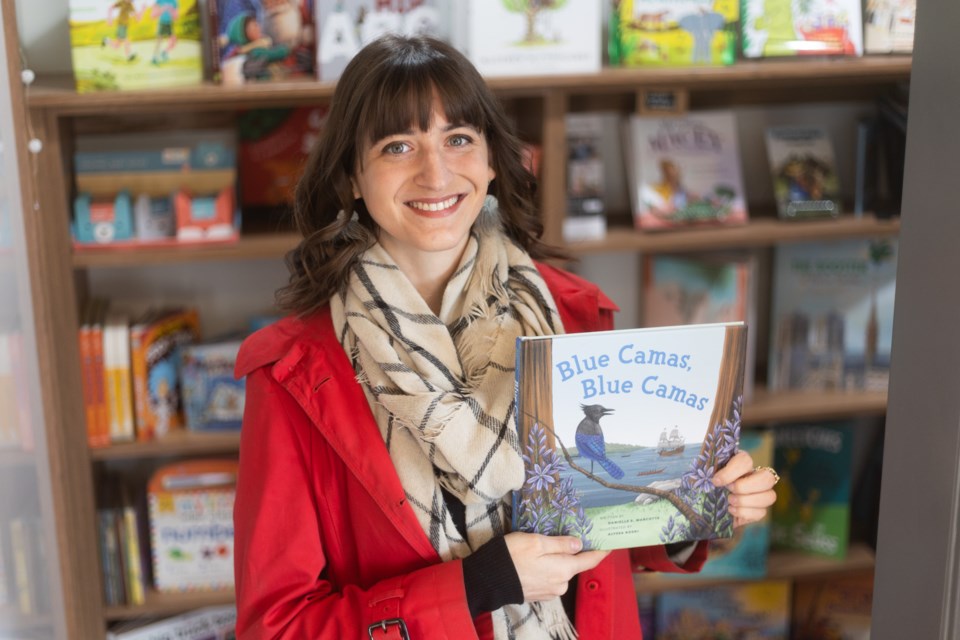An Indigenous Okotoks illustrator has inked yet another Canadian children’s book.
Tapped by Heritage House Publishing once again, Alyssa Koski illustrated Blue Camas, Blue Camas, written by author and retired journalist Danielle S. Marcotte.
The book centres on Indigenous people of the West Coast, and the titular blue camas plant on which some staked much of their way of life.
“It starts off with a young girl in her village, harvesting the blue camas, which is native to the Vancouver Island area,” Koski explained. “It was a really important plant and so much of their community revolved around it.
“In this story, the Lekwungen people, this girl and her family and her community take care of this field of blue camas, because it comes back every year and they’ve created this field and prepped the land so the blue camas can thrive.”
What ends up happening, however, is European settlers show up, they see the meadow only for its potential to farm their own crops. Through the book, the story is told from the perspective of birds observing and narrating the story.
“The settlers come and they see this field, and don’t recognize the importance of this plant, so they end up clearing the field and plowing it for their own purposes,” Koski said.
“The story kind of talks about the miscommunications that happened between the Indigenous people and the settlers, and the sort of unfortunate ignorance that comes from it, because the Europeans, this Irish family, they’re very kind and very concerned about this girl, but they don’t realize how much they’ve impacted her and her community.”
Framing these early interactions in that light was an intriguing way to tell the story, Koski added.
“It was just really interesting to see a story framed in this way,” Koski said. “It was interesting to see the kind of story (Marcotte) put together.”
A member of the Kainai First Nation, Koski has always enjoyed learning about other Indigenous cultures as part of her research when signing onto a book project.
“The funny thing is I haven’t worked with any authors yet that are Blackfoot, which is my heritage, but it’s so interesting to work with these Indigenous cultures that are very different from Blackfoot culture, but also very similar,” Koski said.
“There’s a lot of similarities like residential schools, the unfortunately negative similarities, but even just when it comes down to how the different communities use the land for themselves in different ways and just seeing how Canada was pre-settlers, and each different geographical location how it was harnessed to help the community.
“There’s an interesting illustration (in Blue Camas), the way they cook them is bury them with hot coals to cook the bulbs, it’s really interesting.”
For Blue Camas, Blue Camas in particular, learning about the local flora beyond the title piqued Koski’s curiosity.
“I loved this one for the landscapes especially, because there were so many interesting plants native to the Vancouver Island area that I wasn’t aware of pre-research,” she said.
For more information or to purchase Blue Camas, Blue Camas or other books illustrated by Koski, visit HeritageHouse.ca.




